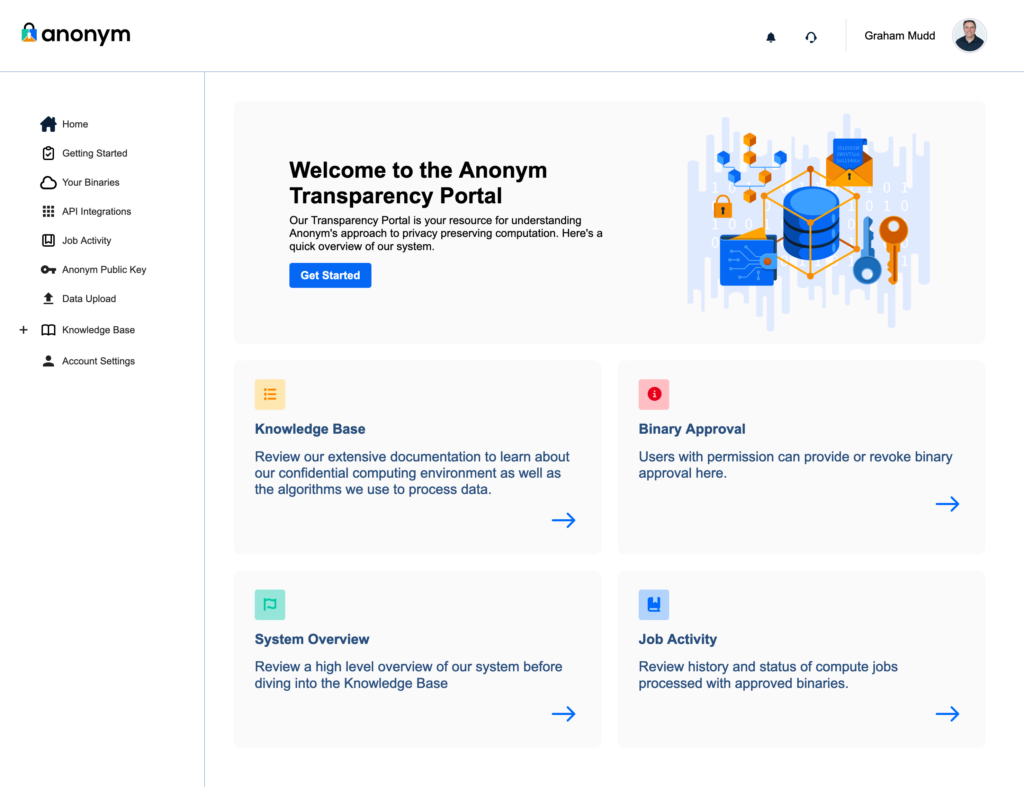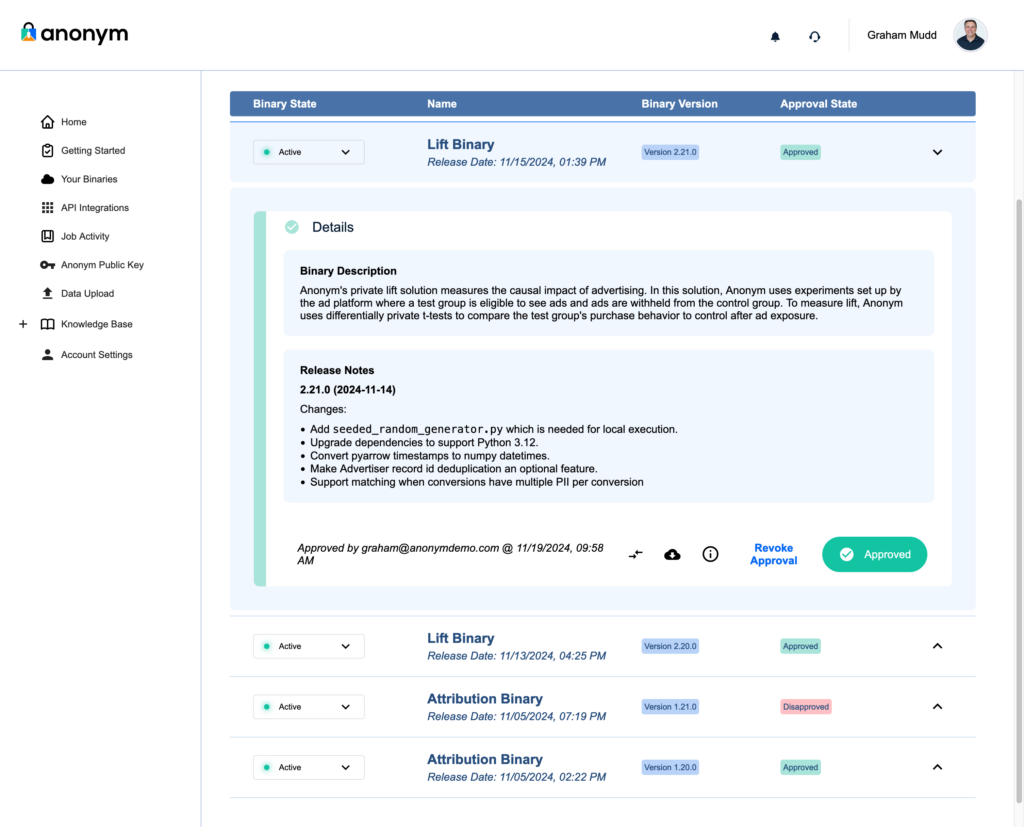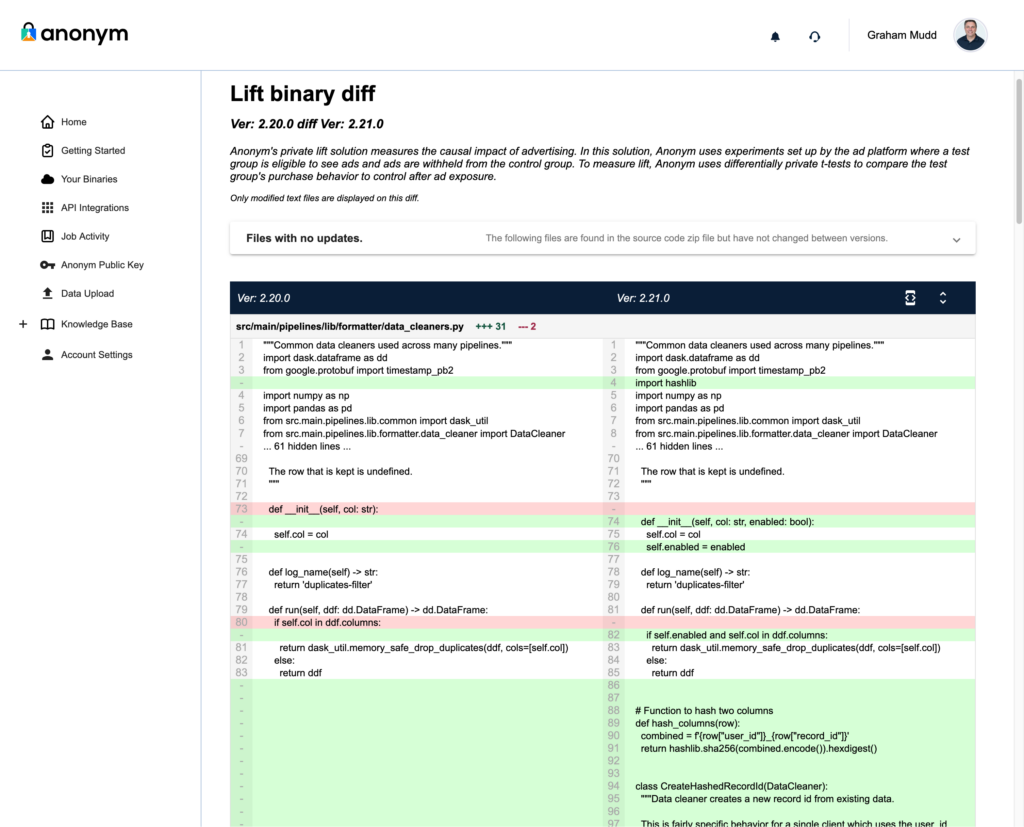Continuing our series on Anonym’s technology, this post focuses on the Transparency Portal, a critical tool designed to give our partners comprehensive visibility into the processes and algorithms that handle their data. As a reminder, Mozilla acquired Anonym over the summer of 2024, as a key pillar in its effort to raise the standards of privacy in the advertising industry. These privacy concerns are well documented, as described in the US Federal Trade Commission’s recent report. Separate from Mozilla surfaces like Firefox, which work to protect users from invasive data collection, Anonym is ad tech infrastructure that focuses on improving privacy measures for data commonly shared between advertisers and ad networks.
Anonym uses Trusted Execution Environments, which include the benefit of providing security to users through the attestation processes. As discussed in our last post, this guarantees that only approved code can be run. Anonym wanted our customers to be able to participate in this process without the burden of overly complicated technical integration. For this reason Anonym developed the Transparency Portal and a process we call binary review. Anonym’s Transparency Portal provides comprehensive review capabilities and operational control over data processing to partners.

The Transparency Portal: Core features
The Transparency Portal is designed to offer clear, actionable insights into how data is processed while enabling partners to maintain strict control over the use of their data. The platform’s key components include:
- Knowledge Base
Anonym provides comprehensive documentation of all aspects of our system, including: 1) the architecture and security practices for the trusted execution environment Anonym uses for data processing; 2) details on the methodology used for the application, such as our measurement solutions (Private Lift, Private Attribution) and 3) how Anonym uses differential privacy to help preserve the anonymity of individuals. - Binary Review and Approval
Partners can review and approve each solution Anonym offers, a process we call Binary Review. On the Your Binaries tab, partners can download source code, inspect cryptographic metadata, and approve or revoke binaries (i.e. the code behind the solutions) as needed. This ensures that only vetted and authorized code can process partner data.

 Bridging security, transparency and control
Bridging security, transparency and control
We believe visibility and accountability are foundational requirements of any technology, and especially for systems that process consumer data, such as digital advertising. By integrating comprehensive review, approval, and audit capabilities, the Transparency Portal ensures that our partners have full visibility into how their data is used for advertising purposes while maintaining strict data security and helping to support compliance efforts.
In our next post, we’ll delve into the role of encryption and secure data transfer in Anonym’s platform, explaining how these mechanisms work alongside the Transparency Portal and the TEE to protect sensitive data at every stage of processing.
The post Building trust through transparency: A deep dive into the Anonym Transparency Portal appeared first on The Mozilla Blog.